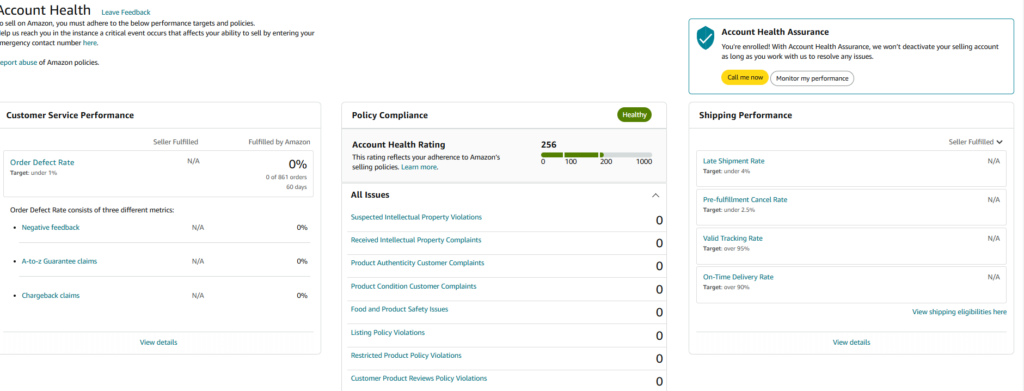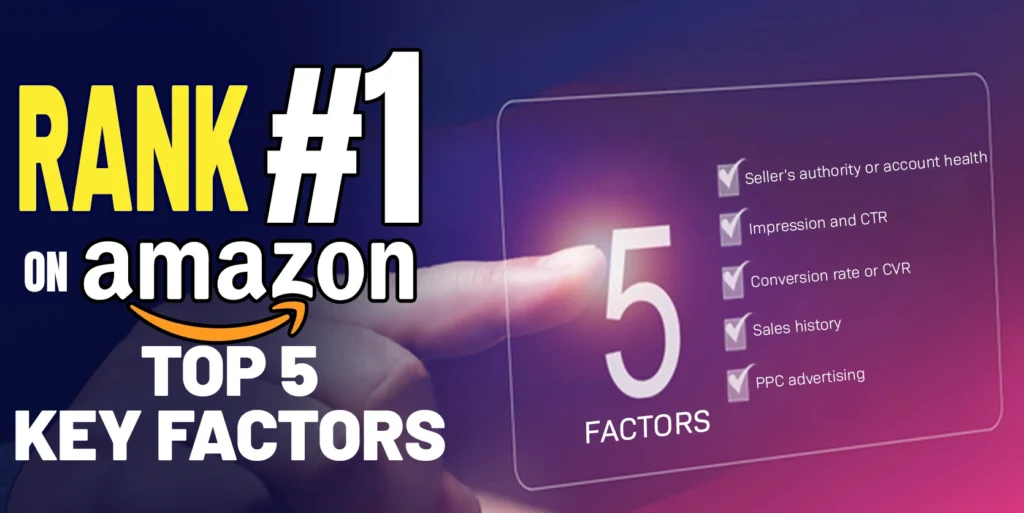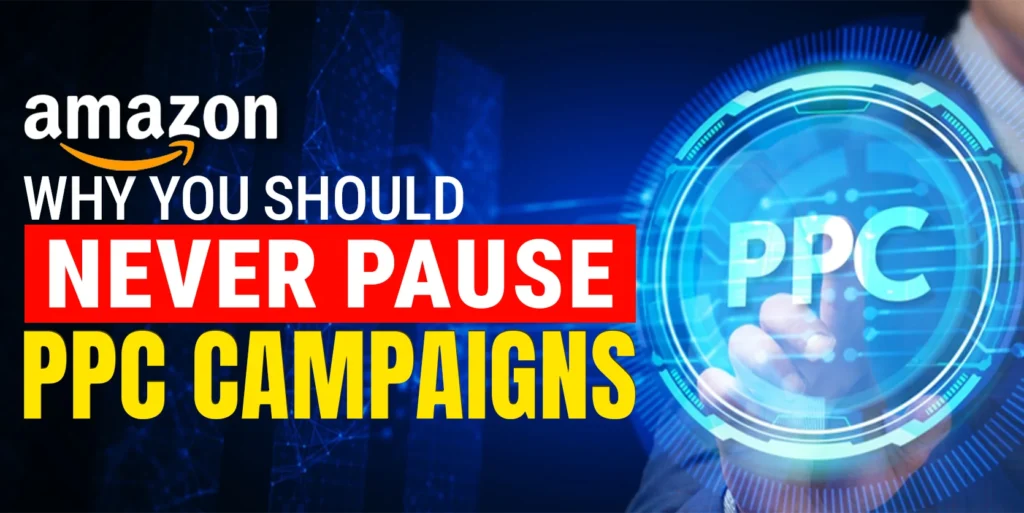As the holiday season approaches, imagine the hustle and bustle of eager shoppers flocking to Amazon, ready to snag the best deals. For sellers, this is a golden opportunity to harness the surge in traffic and elevate their product rankings. But the path to success isn’t always clear; many sellers struggle to navigate the complexities of Amazon’s ranking algorithms. In this blog, we will explore the five critical factors that can supercharge your Amazon PPC ads strategy for Q4, helping you boost sales and enhance visibility during the busiest shopping season of the year.
1. Seller Authority: Keep Your Account Healthy
Seller authority—or account health—is the bedrock of your product’s ranking on Amazon. Why is account health so crucial? A healthy account translates to increased visibility and traffic, while a compromised account can lead to reduced sales, especially in the competitive Q4 landscape. Sellers often find their account health dipping due to high cancellation rates, poor feedback, or slow shipping times, all of which can severely impact your Amazon PPC ads strategy for Q4.

To improve account health, focus on:
-Maintaining Buy Box eligibility: Ensure your pricing is competitive and your inventory is well-stocked.
– Monitoring feedback scores: Address negative feedback promptly to maintain a positive seller rating.
– Reducing A-to-Z claims and order defect rates: Efficiently manage customer service and returns to keep these metrics low.
A robust account health will not only enhance your visibility but will also optimize the effectiveness of your Amazon PPC Q4 hacks.
2. Impressions & Click-Through Rate (CTR): Attract the Right Attention
Generating impressions is just the beginning; you need to attract relevant clicks. This is where your Amazon PPC ads play a pivotal role. By targeting the right audience with effective keywords, you can significantly improve your CTR. To optimize CTR during Q4:

– Refine your PPC campaigns: Use precise keyword targeting to ensure your ads reach potential buyers.
– Enhance product listings: Optimize titles, bullet points, and images to make your products more appealing.
A high CTR signals to Amazon that your products are relevant, which can further improve your ranking and increase visibility as the holiday rush commences.
3. Conversion Rate (CVR): Convert Visitors into Buyers
Once you’ve driven traffic, converting those visitors into buyers is where the real magic happens. A well-structured Amazon PPC ads plan can significantly boost your conversion rate. Consider these strategies:

– Use dynamic pricing: Implement limited-time discounts to create urgency and drive sales.
– Highlight reviews and ratings: Ensure your product pages showcase positive reviews prominently, as trust plays a crucial role in conversions.
By analyzing data from your PPC campaigns, you can identify which strategies yield the highest conversion rates and adjust your tactics accordingly.
4. Sales History: Building Momentum
Amazon closely monitors sales performance over the past 30 days. Products that demonstrate strong sales momentum are likely to rank higher. To leverage this during Q4, utilize targeted Amazon PPC ads to drive a spike in sales.
Amazon’s algorithm heavily relies on a product’s sales history as a crucial factor in ranking. By closely analyzing sales data over the past 30 days, Amazon gauges the popularity and performance of products. Products with a strong, upward sales trajectory are more likely to rank higher in search results, as Amazon interprets them as high-value items with a greater likelihood of satisfying customers.

This emphasis on sales momentum means that sellers who understand and harness sales history data can boost their visibility and conversion rates, especially during Q4. Let’s explore how sales history data can be effectively analyzed and used to optimize Amazon PPC ads, thereby driving more sales during the competitive holiday season.
A. Analyzing Amazon Sales History Data
To make the most of sales history data, sellers can track and analyze specific metrics, such as daily and weekly sales, conversion rates, and sales trends over time. By studying this data, you can identify patterns and spot key trends, including peak sales times, the effects of promotional activities, and the products that are performing best. Here’s how:
- Daily and Weekly Sales Trends: Analyze your daily and weekly sales volume to see how consistent your product performance is. A gradual increase in sales volume indicates that your product is gaining momentum, which can encourage Amazon to rank it higher.
- Conversion Rates (CVR): Review your CVR to understand how many visitors are converting to buyers. High conversion rates indicate that people are interested in your product and willing to purchase it, which positively impacts your sales history.
- Sales Spikes and Slumps: Track periods when sales spike or dip. Identifying these trends allows you to attribute performance to specific factors, such as price changes, promotions, or changes in ad spend.
Through consistent tracking of these data points, you can identify successful strategies and adapt your PPC campaign accordingly to replicate and enhance this success.
B. Using Sales History Data to Inform Amazon PPC Strategy
With insights from your sales history, you can adjust your Amazon PPC ads to focus on products with high sales potential. Here’s how to use this data to make data-driven decisions:
- Focus on High-Converting Products: Allocate a higher budget to products with consistent sales and good conversion rates, as these are likely to continue performing well. This ensures that your ad spend is directed toward items with high conversion potential, maximizing return on investment (ROI).
- Utilize Seasonal Trends: If you’ve observed a sales spike in Q4 in previous years, increase your ad spend on those products during the holiday season to capitalize on heightened demand.
- Adjust Bidding Based on Performance: Boost bids on keywords that have historically contributed to high sales and conversions. Lower bids for keywords that aren’t performing as well, reallocating that budget to top-performing ones.
For instance, if you find that specific keywords tend to bring in the most conversions on weekends or specific times of day, adjust your PPC campaigns to align with these trends. This allows you to concentrate your budget on peak sales times and keywords with a high probability of conversion.
C. How Leveraging Sales History Data Boosts Q4 Sales
With Q4 being the busiest shopping season, using sales history data to inform your PPC strategy can have a significant impact on sales. Here’s how this approach helps sellers thrive during Q4:
- Higher Ranking and Visibility: By boosting sales through well-optimized PPC ads, you build positive sales momentum, encouraging Amazon to rank your product higher. As your sales grow, so does your organic ranking, making it easier for more customers to find your product even beyond PPC campaigns.
- More Efficient Ad Spend: Sales history data allows you to spend wisely by targeting high-performing keywords and products. Rather than spreading your budget thin across multiple products or keywords, you can concentrate it where it’s likely to drive the most significant results.
- Increased Conversion Rates: A targeted PPC campaign, refined through sales history insights, is more likely to attract relevant buyers, leading to higher conversion rates. Higher conversions during Q4 reinforce positive sales momentum, further improving your product’s ranking and visibility.
- Early Season Momentum: By starting PPC campaigns with sales history data in mind early in Q4, you can build consistent sales momentum. Amazon’s algorithm recognizes this momentum, leading to increased exposure for your product at a crucial time, just as holiday shopping kicks off in earnest.
Here’s a table version summarizing the approach for leveraging Amazon sales history data for Q4 success:
| Section | Focus Area | Actions | Benefits |
|---|---|---|---|
| A | Analyzing Amazon Sales History Data |
|
|
| B | Using Sales History Data to Inform PPC Strategy |
|
|
| C | Leveraging Sales History for Q4 Sales Boost |
|
|
“` Copy this HTML into your WordPress editor to display a table with the strategies for using Amazon sales history data to optimize PPC ads and boost Q4 sales.
In conclusion, sellers who analyze and leverage their Amazon sales history data can fine-tune their PPC campaigns to capitalize on the Q4 surge in demand. By aligning your ad strategy with proven patterns in your sales data, you’re more likely to gain a competitive edge, rank higher in search results, and ultimately boost sales throughout the holiday season.
5. PPC Advertising: Targeted Campaigns for Faster Results
Amazon PPC advertising is your quickest route to improving product rank. During Q4, it’s essential to implement targeted campaigns that capture the influx of traffic. Focus on:
– Exact, phrase, and broad match keywords: Tailor your PPC ads to maximize impressions and conversions.
– Regular campaign analysis: Continuously evaluate the performance of your ads, adjusting bids and keywords based on what works.
Effective Amazon PPC ads strategy for Q4 involves not only spending wisely but also optimizing your campaigns to achieve meaningful traffic and improved rankings.
Key Takeaways for Q4 Success
Incorporating these five factors—seller authority, impressions and CTR, conversion rate, sales history, and PPC advertising—into your Q4 strategy will help you boost your product rankings and increase sales. Remember to focus on:
– Buy Box Eligibility: Ensure you’re eligible to win the Buy Box to maximize sales potential.
– Customer Feedback: Respond promptly to feedback to maintain a positive seller rating.
– Performance Monitoring: Regularly track performance metrics such as shipping times, return rates, and order cancellations to avoid issues that can negatively impact your account health.
– Inventory Management: Keep a close eye on your stock levels to avoid running out of inventory during peak shopping periods.
Conclusion
Q4 presents an unparalleled opportunity to significantly boost your Amazon business. By focusing on the five key ranking factors and refining your Amazon PPC strategy, you can improve your product ranking and make the most of the holiday shopping season.
At Ecomclips, we’ve been helping Amazon sellers grow their sales and capture market share through a combination of PPC and organic SEO strategies. If you’re looking to boost your Amazon sales or expand your brand’s presence, feel free to reach out to us at info@ecomclips.com.
We also offer free Amazon store and account audits for both PPC and SEO. If you’d like us to review your account and provide insights on how to improve performance, just contact us via email. We’re always ready to assist with personalized solutions, tailored to help you manage your PPC campaigns and enhance your profitability. For any other questions or support, don’t hesitate to drop a comment below. We’re here to help you succeed!



